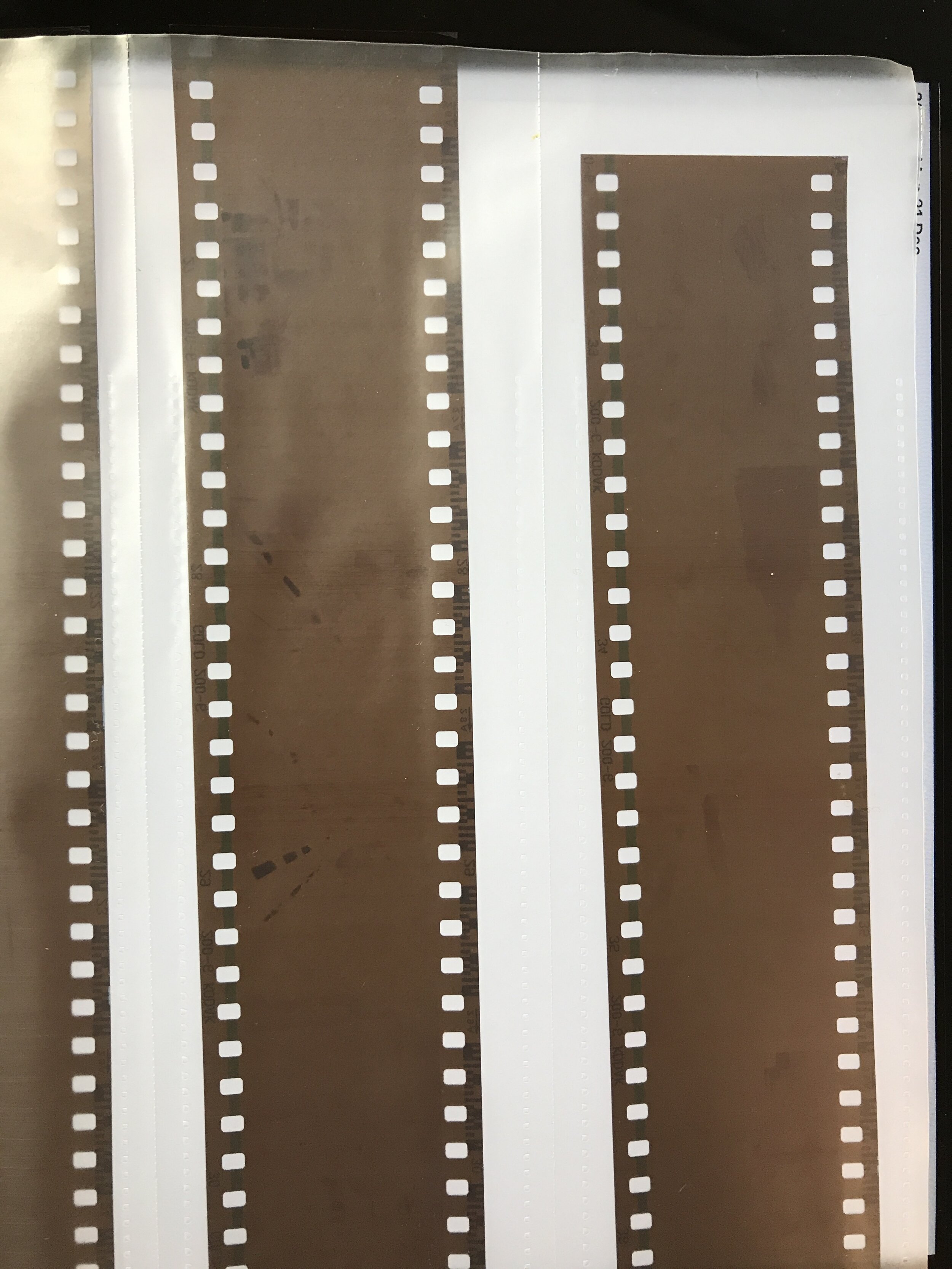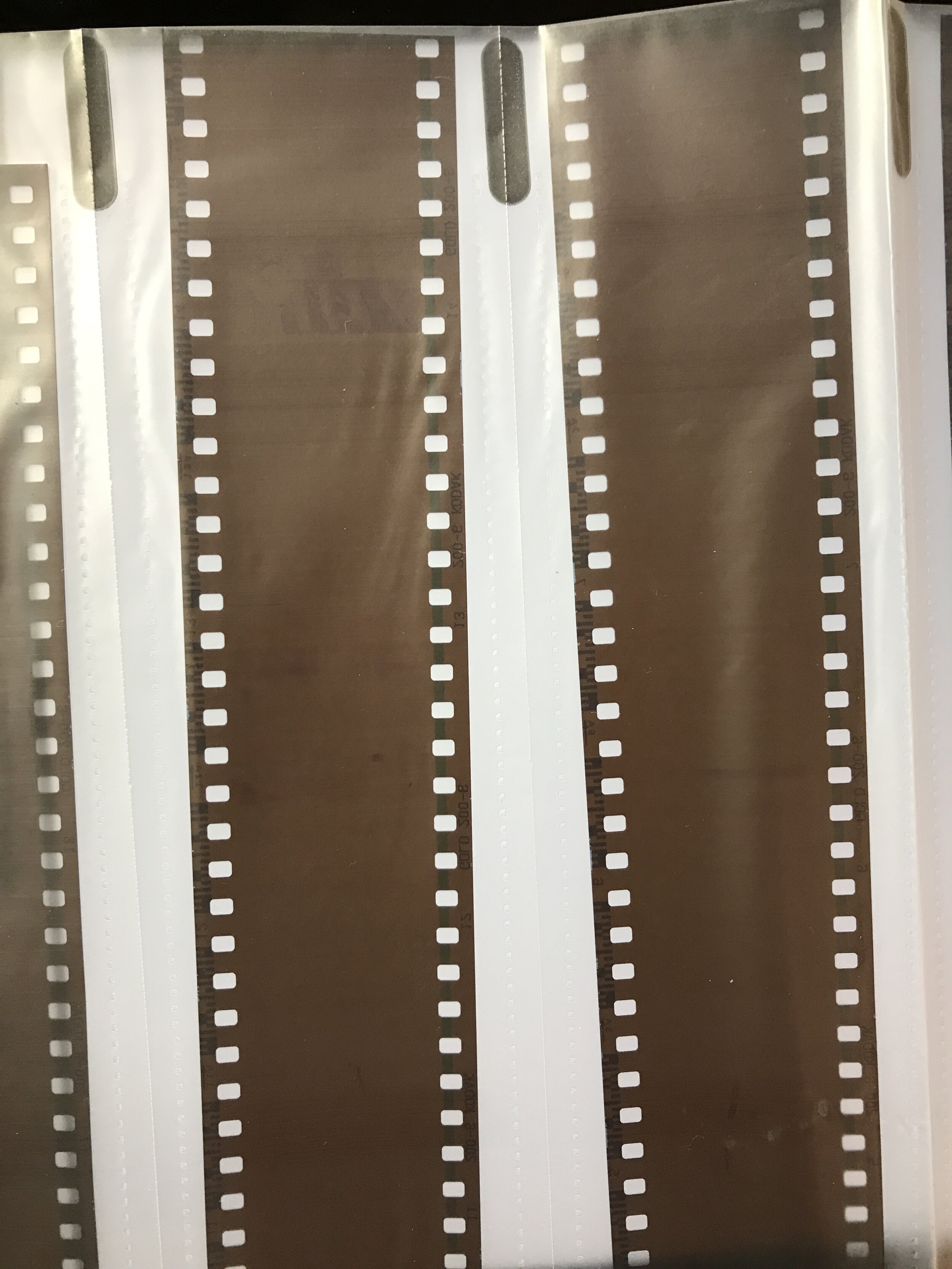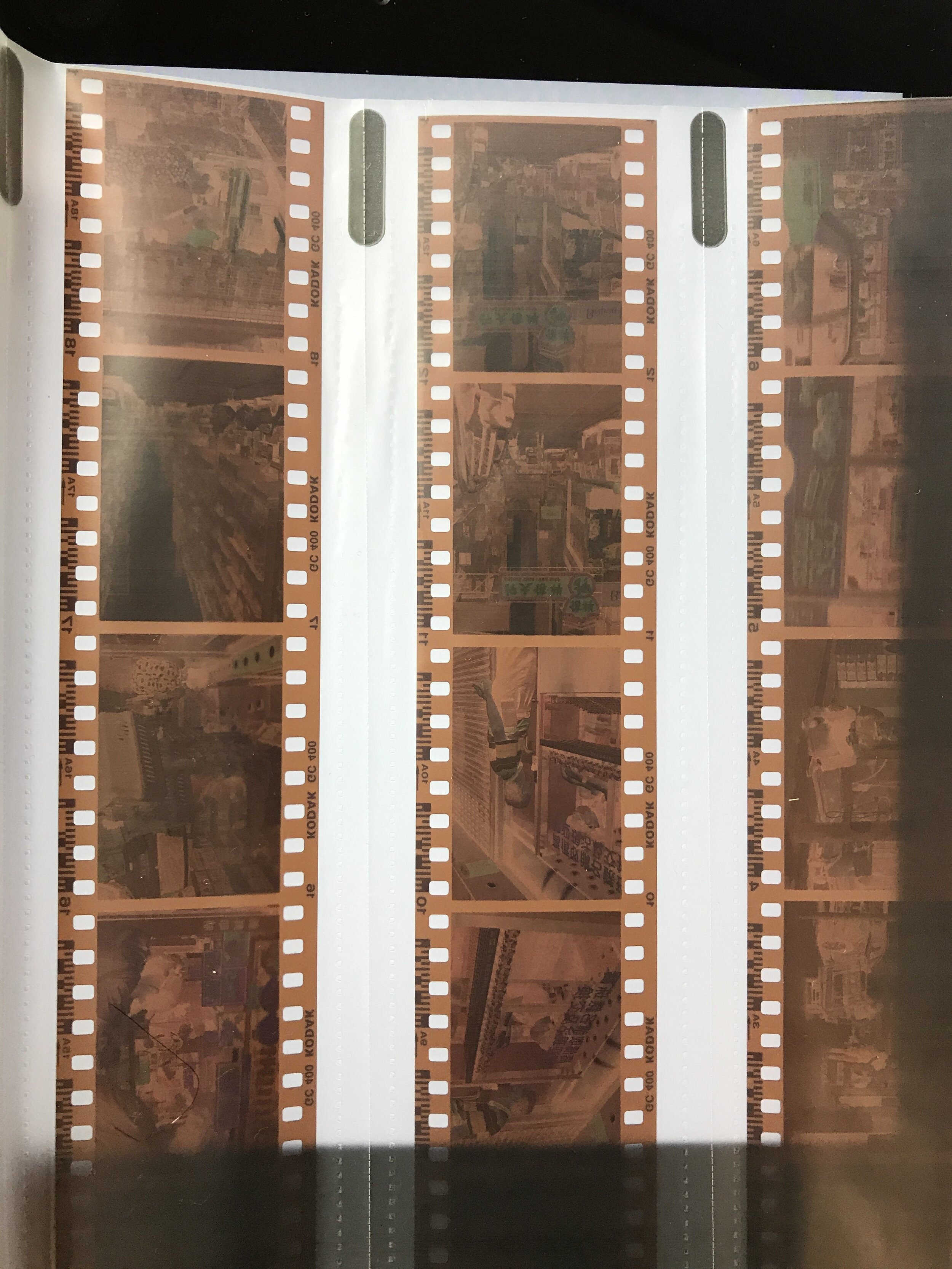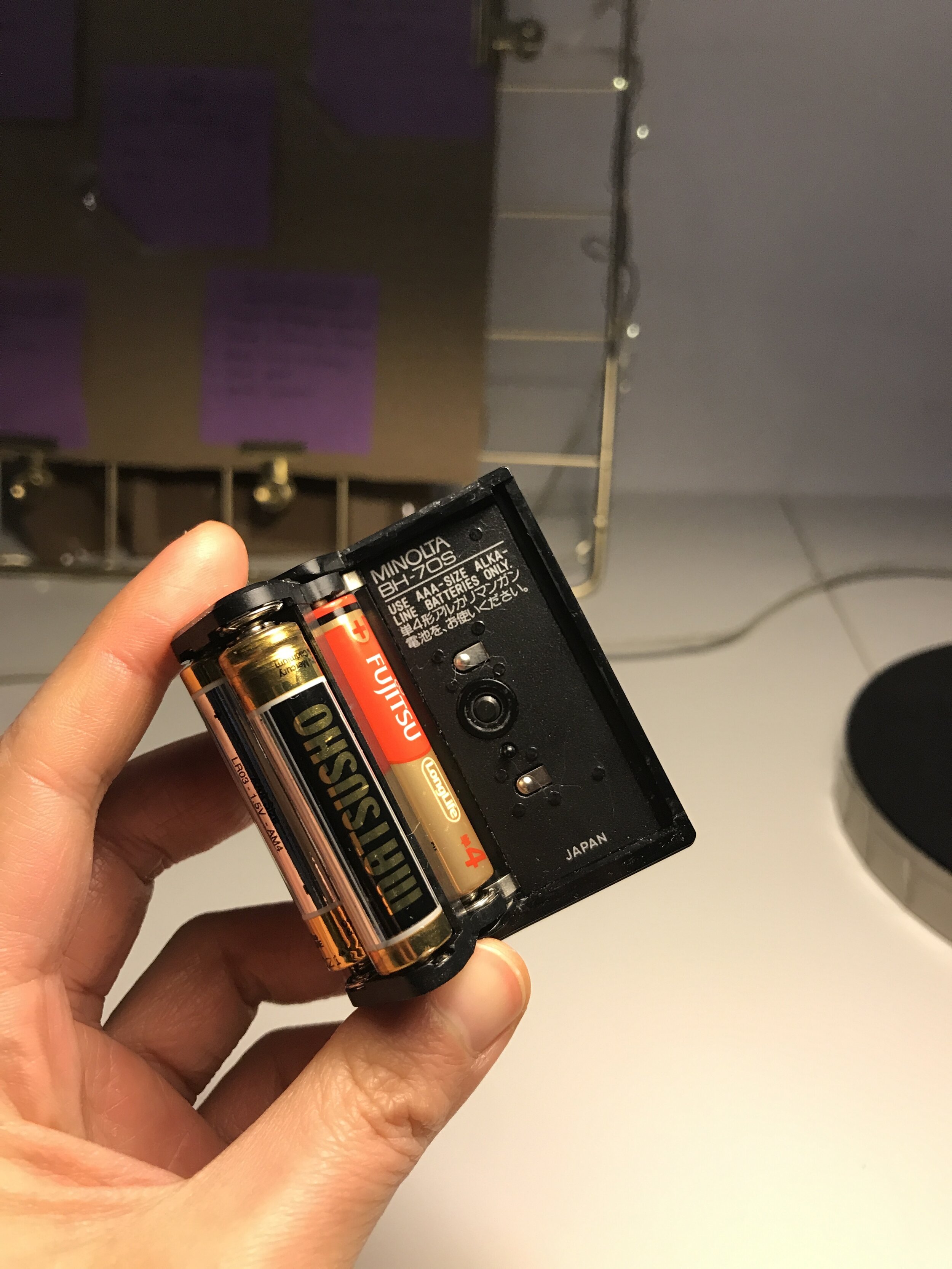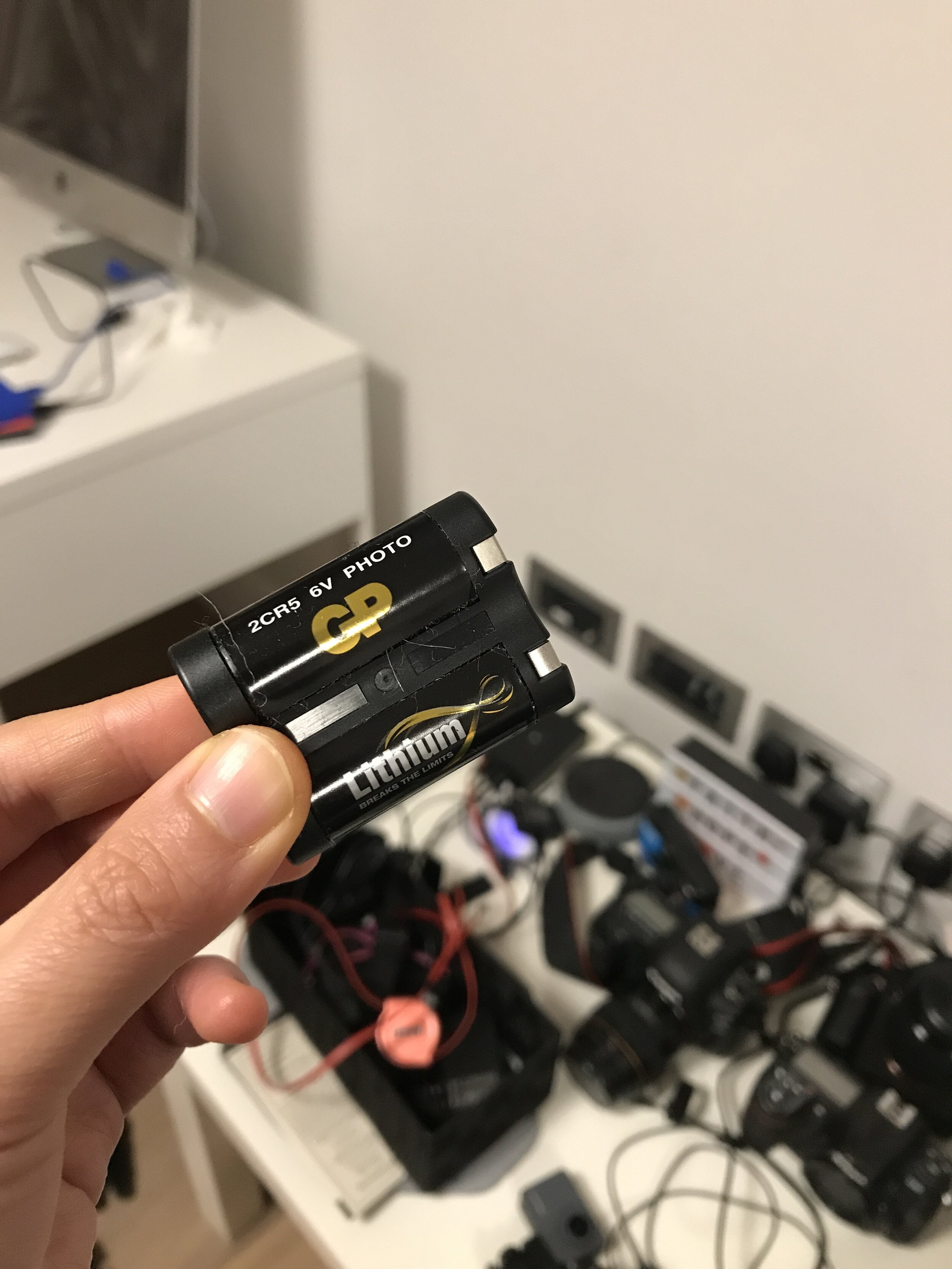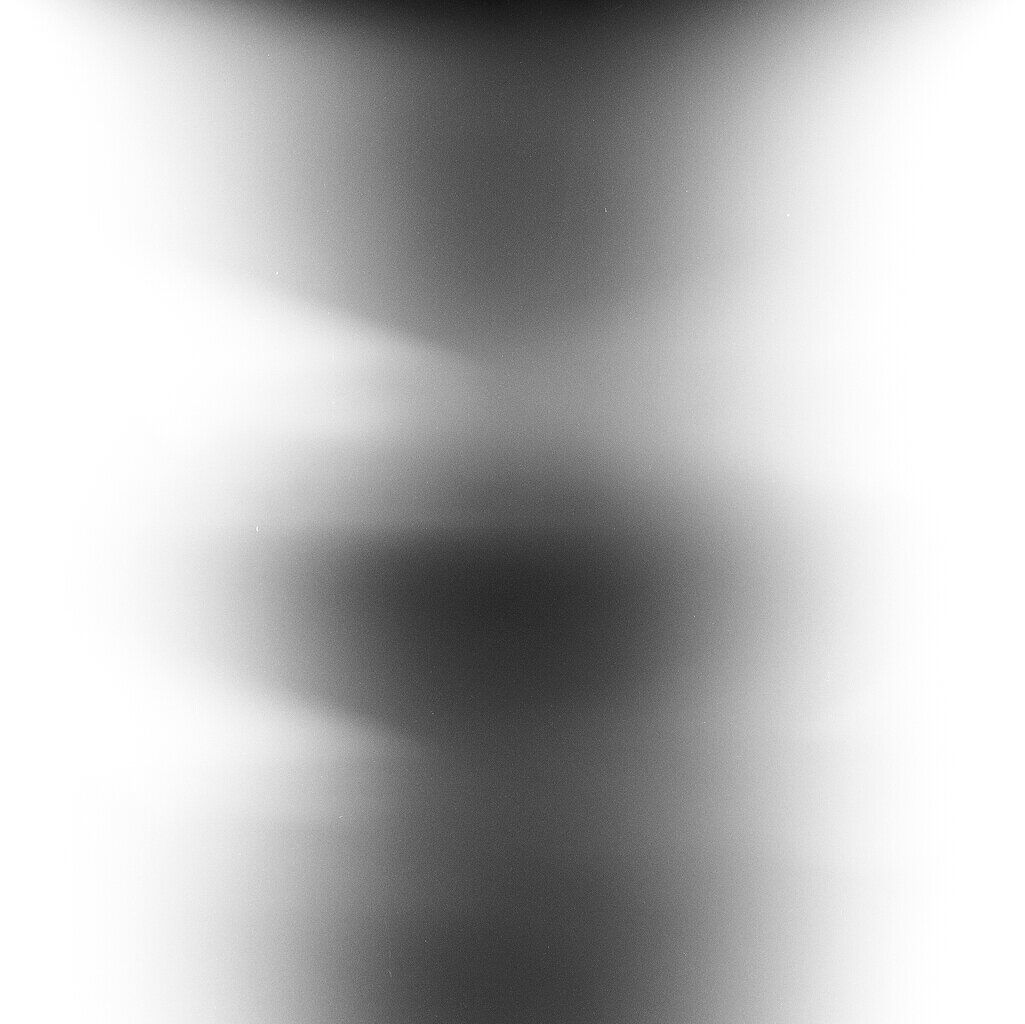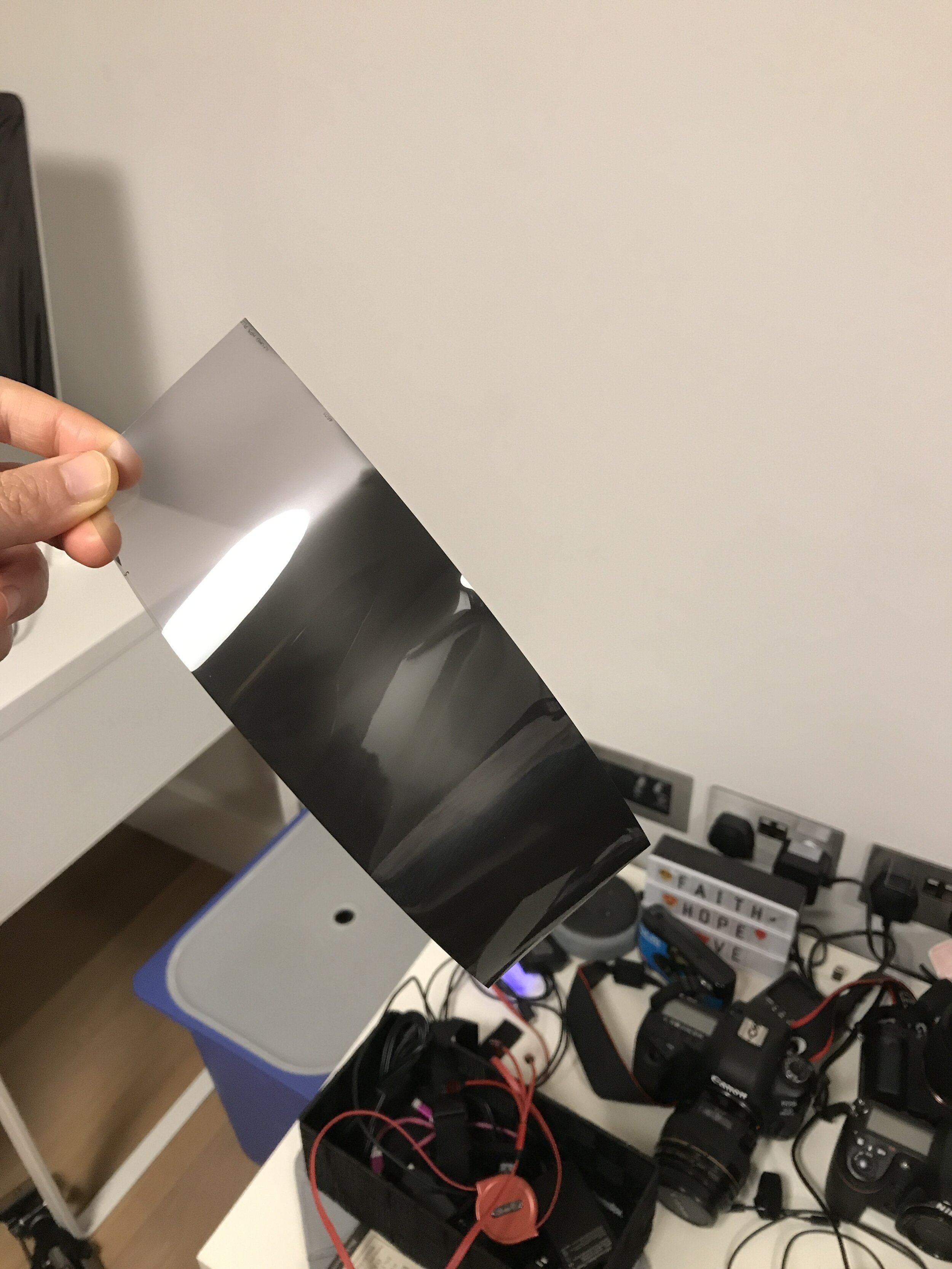Film photography is the new old-fashioned hobby makings its comeback! For beginners, handling analogue cameras can be quite a confusing experience and issues with film cameras come with all forms and sizes, which make it hard to look for specific answers online that speaks directly to your situation at hand.
This troubleshoot guide does exactly this - it covers niche troubles people commonly run into when picking up or inheriting second hand, old film cameras. You will find a wealth of information in relation to storing film, key points in time of a roll of film’s lifetime, operational tips in using a film camera, how to deal with accidents, and disposable film cameras.
Specifically, here are the list of questions this article will cover:
In relation to film stock
How long can you leave undeveloped, unfinished film in a camera?
Does undeveloped film go bad with time? How long does unprocessed film last?
Should you store film in the fridge and why?
Is it safe to store film cameras in the fridge?
How to store completed roll of film before developing?
When can film be safely exposed to light?
How to tell if a film has been shot or not?
In relation to operating film cameras
How to check if a film camera is still working?
How to find out if there is film in a camera?
How to check if the film is loaded properly?
How to know if the film camera has taken a picture properly?
How to find out if you are done shooting an entire roll of film?
Do film camera need batteries? Are there film cameras that do not need batteries?
Can you change the lens of a film camera with film inside?
Can you load film (35mm and 120) in daylight? Must you load in the dark?
Can you change film mid-roll and later reuse the partially unfinished roll?
Must you complete an entire roll before developing it?
In relation to accidents
What happens to the film inside if you accidentally open the film camera? What does accidentally exposed frames look like?
Do you lose the entire roll? How many frames are ruined if you accidentally opened the film camera?
What to do if you accidentally exposed the film?
In relation to disposable cameras
How many photos can you take with a disposable film camera?
How long do disposable film cameras last for?
How long does undeveloped film last in disposable film cameras?
If you find this helpful, SUBSCRIBE to my channel via the box on the left to make the most out of my blog! Also, do share it with people who might be interested. Shoot me an email/ DM to share your thoughts too.
Also, Pin this article to your Film Photography/ Photography Inspiration boards in Pinterest if you find it helpful!
Film Storage Methods and Expiration Times
Does undeveloped film go bad with time?
Yes, undeveloped film deteriorates in its light sensitivity over time. In practical terms, the effective ISO of that film gradually decreases with time. Unprocessed film stock has a shelf-life of around 2 years after manufacture, during which the deterioration in performance is not significant. Beyond this recommended timeframe, the rate at which a roll of film goes bad can be accelerated to a varying degree, depending on factors including the type of film, film speed, and storage conditions.
This deterioration is a result of changes in the chemicals inside the film, which is mostly caused by exposure to all sorts of background radiation. This happens naturally with the passage of time to all film stock regardless of storage conditions. It is just a difference of the rate of deterioration. When film goes bad, its ability to capture light decreases, leading to issues like fogging and increased grain. Here are some examples of fogging observed on images developed from poorly-kept negatives. Specifically, these are images from a 20-year old roll of Kodak 100 Colour negative, as shown on a contact sheet.
As you can see, the images turn out to be incredibly underexposed and the contrast level is so low that in many frames, you can’t really make out what the photo is about.
For your reference, the below is what a normal contact sheet should look like. The images should turn out just like how you would normally expect them to look on digital cameras - there should be proper black and white points, and sufficient shadow detail so that it looks like a substantial image. This series of images are shot using Kodak Portra 800 with a Minolta 5000 paired with the Minolta’s nifty fifty.
Here is another comparison point in relation to the negative itself. First, let’s look at that of the expired, terribly fogged film. When observed against a Lightbox, the negatives doesn’t contain much information at all. Some frames are even almost empty. This is why the images turn out to be completely dark and grey.
For your reference, here is what a properly exposed negative would look like against a Lightbox. Not only can you see the different shades of brightness, ranging from black to whites, but in some areas even the colours. This information contained on a negative is what gives the final image.
Here is how you find out the expiration month and year for your precise roll of film. You will need to refer to the paper box.
The expiration month and year is printed on the paper box that the roll of film comes in. The expiration date is analogous to a ‘best before’ date that applies to foods, which does not render the film immediately unusable, but it is highly recommended that you develop the film before reaching that date for best results.
How long does unprocessed film last? How long can you leave undeveloped, unfinished film inside a camera?
There is no way to know for sure how long a particular unprocessed roll of film will last - there is an inherent component of uncertainty in shooting film!
Film has a generally recommended shelf-life of 2 years, but if well-kept, it can last up to decades. Some factors are commonly understood to make a difference in how long a roll of film can last after expiration: usually, slower films last longer than faster ones, black and white film lasts longer than colour film, and films that have been stored in a cold, dry environment tends to last longer. Where you are not using the film for important occasions, with some guesswork in exposing your shots, you can still obtain usable images even if your film has not been properly stored as required by its film speed and type.
Still, with these factors in mind, you can’t tell for sure how long the roll will last. The state of the film varies widely from case to case, and these factors may not be absolutely conclusive. But based on your knowledge of the roll of film, you could work out if it is worth giving the roll of film a shot (pun intended).
As an example, here is the final image from a roll of colour film at film speed 200, which sat in a camera for 20 years, which I only recently developed. It has not been cold stored. Given that it was in Hong Kong, the temperatures ranged around 20-30 degrees Celsius.
Film Speed
The higher the film speed, the faster the deterioration process.
Film speed is the analogue equivalent to ISO on digital cameras. Film speeds typically range from 50 to 3200, with 200, 400 and 800 being most popular choices today. Film speeds of 200 and below are generally regarded as slower film speeds, 400 being moderate, and 800 or above being relatively fast film speeds. A faster film speed means that it is more sensitive to light. A higher light sensitivity enables you to take pictures in darker environments without introducing extra lighting.
Assuming the film is stored under moderate conditions, which will be further elaborated on below, slower film speeds typically do not exhibit much signs of ageing, even across decades. Rolls with film speeds of around 400 stored under the same conditions could last for around a few years at most, whereas rolls with film speeds of 800 and beyond can be expected to perform significantly worse beyond its expiration date if no extra measures are taken in its storage.
Film Type
In relation to negatives, which is the most widely-shot type of film, black and white films age better than colour films. When stored under optimal conditions (again, refer to below), you can expect the latter to still perform close to box condition, but typically, colour negatives are expected to last for at most 10 years.
In relation to colour reversal (also known as slide) films, they typically do not lose much film speed if stored properly, though they might start to develop a colour cast a few years after expiration.
How well your film last can also vary depending on the brand of manufacture, though this is highly subject and you must come up with your judgment based on experience. Each manufacturer takes the lead when different aspects of film performance are assessed.
Storage Conditions
Storage conditions that are relevant here are mainly the temperature, humidity and containers. As I said, you must always keep in mind a margin of appreciation when reading statistics or figures in relation to film, because of the inherently unknowable nature of the hobby. But to give you a ball-park figure, I have extracted the optimal storage conditions as recommended by the official Kodak guide, which could be used as a proxy for film stocks in general.
The way you can use this information is that you could cross-check how well the film treatment aligns with the recommended storage conditions. If it deviates significantly from what is optimal, it would probably be wise to give it a pass, or only use the film for experimental purposes.
Let’s first look at colour films. For films that have:
Expired for less than 6 months, it retains its quality the best where stored under 13°C/ 55°F and 60% humidity. The average humidity of household refrigerators is around 65%, so the film needs to be inside the water-tight plastic can for best results, even better where extra protection is offered by plastic bags or other wrappings.
For film that has expired beyond 6 months, it retains its performance the best where stored under -18 to -23°C/ 0 to -10°F, which generally corresponds to the temperature in household freezers. The humidity is best kept under 50%.
As for black and white films, Kodak issued another guide specifically providing information on that. For films have:
Expired for less than 2 months, it is best that it be stored under 24°C/ 75°F, with humidity below 60%. Similarly, where stored in an average household fridge, the results will be best where packaging remains intact to provide a relatively dry buffer for the film.
Expired for less than 6 months, optimal storage temperature is at 16°C/ 60°F, with humidity below 60%.
Expired for beyond 6 months, optimal storage temperature is at 10°C/ 50°F, with humidity below 60%.
Your Intended Usage
Because film deterioration results in a spectrum, whether or not a film remains usable ultimately depends on your intended purpose. The hype regarding shooting expired film is real in various parts of the world, and many people have achieved decent results by compensating for the lost in effective film speed of expired films. It will required the photographer to exercise his judgment in working out the settings when shooting on the expired film, therefore expired film not stored under optimal conditions are not immediately useless.
I would personally not use expired film for any important occasions, such as paid client work and remarkable trips and photojournalism, but am happy to experiment and try out my luck for more leisure, personal shoots. As I have showed above, I completed this roll of poorly-stored 20 year old film just for fun. So in that sense you can keep it for 20 years, but in terms of professional use, the answer becomes no.
Should you store film in the fridge and why?
Overall, storing film in the fridge is recommended as a last resort in the event of not being able to complete a film roll that is approaching expiry, or picking up cheap, expired film rolls that have been cold stored. Otherwise, film does not need to be stored in the fridge. Photographers store film in the fridge because the lower temperature slows down the deterioration of the performance of the film, so that it stays relatively usable even after the expiration date. The background radiation present under room conditions would cause chemical changes in the film stock, which adversely impacts the ability of the film to capture light. Although this process inevitably still takes place in the cold, it happens at a significantly slower rate. This is typically required where film is bought in bulk for cheaper prices, or for other reasons not intended to be shot within the typical shelf-life of 2 years counting from manufacture.
If you have bought film that you know will not be shot and developed within the recommended timeframe of 2 years (usually), then it is advised that you store film in a fridge. The same applies to buying second-hand film rolls that has been stored in the cold since its expiration date. Doing so allows you to yield better results when you finally decide to use up the (potentially expired) film. Especially if the film of your choice is of a relatively higher ISO, 800 and above, the way the film is stored makes a huge difference to the rate at which it deteriorates. Where necessary, extra preservation effects can be achieved by placing film rolls in the freezer.
However, storing film in the fridge should be your last resort, as it is best practice to develop the film within the recommended timeframe. Preservation techniques such as storing film in the fridge gives rise to more complication and procedures, such as the need to thaw the film and bring it back to room temperature before it can be safely loaded onto your film camera. You can also forget about having that film all together too, because they are tucked away at the back of your fridge. Your fridge can also be more humid than idea for film to be stored.
Generally speaking, you should buy film that you realistically foresee yourself to be able to shoot. This makes the most economic sense because you are running the risk of massive wastage by hoarding film beyond their expiration date.
Is it safe to store film cameras in the fridge?
No, it is not safe to store film cameras in the fridge. Cameras must be stored under relatively dry conditions to prevent its internal circuits and elements from developing mould. The moisture in the air in a fridge can easily give rise to condensation droplets forming inside the camera, damaging the electronic parts that are vital for the camera to function.
When can film be safely exposed to light?
Film can safely be exposed to light after the development process is completed, which renders the film no longer light sensitive. If you are not developing your own film, it means that you will have to keep it light-sealed up till the point you bring it to the film lab of your choice, which will take care of the development. If you are developing your own film, you will have to keep the film in the dark until you have completed the fixer stage. The film then becomes set and can be exposed to light without being altered in any way.
How to store completed roll of film before developing?
The best practices for storing undeveloped film applies the same regardless of whether the film has been exposed, which is to store in low temperatures and humidity. The film roll can be stored in a sealed container in a refrigerator for a few days, and then brought back to room temperature for developing. However, especially for exposed rolls, it is advisable to develop promptly to avoid risking changes in the latent image.
Referring to Kodak’s guide (also quote above), films, especially professional colour films, are designed to be promptly processed. During the time elapsed between exposure and development, high temperatures and high doses of radiation can cause shifts in the latent images, which would result in an altered final image. To avoid that, develop your film at your earliest convenience.
How to tell if a film has been shot or not?
The ways to tell a completed roll of film from an unexposed one are mostly mechanical. The most apparent differentiation is looking for the film leader. If it has been rewinded into the canister completely and is completely unseen, it is mostly shot because all fresh film rolls come with a protruding film leader. Whereas a new roll of film would have the film leader outside of the canister, as shown below, because this tip is needed for the purpose of loading film.
The case becomes less straightforward if the roll of film you are trying to figure out still has a leader sticking out, because mechanical cameras offer photographers the choice to not wind the film all the way into the canister, leaving a bit of the leader outside. This would result in an outlook that is pretty much like that of a new roll.
If this is the case, the only known method is to inspect the curvature of the protruding film leader. If it has been loaded into a camera, the leader should curve substantially more than what you would normally see on a fresh roll.
But to save yourself from this trouble in the first place, it is good practice to always label the canister if you plan to use the roll in a specific way, such as changing film mid roll (which we will discuss below) or leave the leader sticking out for developing at home etc. This is the only way to know for sure what has happened to the roll of film.
Tips and Hacks for Operating Film Cameras
How to find out if there is film in a camera?
Film camera usually comes with a tiny window on the back cover, usually an elongated vertical rectangle right at where the film roll is placed. The see-through window shows the part on the canister which says the specs of the film, so that you can read directly through the window what is beneath. If a camera comes with this window but nothing can be seen, it means that there is no film inside. For older models before this invention, turn the rewind dial in the rewind direction and feel the tension. If there is resistance, there is film sitting inside. Or, turn the film advancing lever and check if the components on the other end turns. If so, there is film in the camera.
Mostly applicable to newer camera models, here is a photo of what the view window typically looks like. Although they can have slightly varying designs, they should be rather easy to spot. As shown from the comparison below, there is no film in my Pentax P30t - there is nothing behind the tiny window on the camera. On the right, there is a roll inside my Minolta 5000 as you can read from the words that show through the window.
For older film camera models without the window, you will have to check the tension to determine if there is film in the camera. Here is a photo of the mechanisms that you can use as a test, using the Pentax P30t as an example.
How to check if a film camera is still working?
There are two basic things that need checking - the shutter and film advancing. For electronic cameras, also check the electronic display by making sure the camera is properly powered by the correct type of batteries. To check the shutter, open the backdoor of the camera and press the shutter button. Check if the shutter curtain opens smoothly. If there is film inside the camera, instead, judge by hearing if the shutter creates a sound, and feeling if the shutter button goes all the way down. Having fired the shutter, the film lever should advance all the way smoothly without being stuck. Lastly, insert a roll of film as a final test.
If your camera is an electronic one, insert the right type of battery before testing. Depending on the degree of automation, some cameras have their shutters and levers locked if the battery is not turned on. Some wouldn’t even load the film without battery. For instance, this is the Minolta 5000, which doesn’t have a lever to pull because it loads the film for the photographer.
Whereas for the Pentax P30t, which is automated to a lesser degree, the shutter runs on battery has a lever but requires the photographer to manually pull the lever to advance film.
If, based on the analysis above, you think there is film inside the camera, DO NOT open the backdoor at all costs, unless the roll of film means absolutely nothing to you. Even so, resist the temptation to just open the backcover because that doesn’t help you find out if the camera is working anyway.
How to check if the film is loaded properly?
For fully automated cameras, flick the power on. If the electronic display frame count as 1 or above, the film has been loaded properly. If the frame count is 0, the film is not advancing and need to be reloaded. For manual cameras, test by pulling the film lever and check the components on the supply side of the camera. The components should be rotating while the lever is pulled. There should also be a moderate level of tension when advancing the film lever caused by the film laying tout in the compartment. The number displayed in the frame counter should also increase while the film lever is pulled.
For SLR film cameras, the film counter is usually located above the film lever, which is the film take-up side, as seen below. The film camera is currently on frame one as it was freshly loaded, as displayed on the screen.
For TLR film cameras, the frame count is displayed through the red window, which is typically a tiny see-through hole in the middle of the film advancing knob, as seen below. This tlr camera of mine is also currently on the first frame, freshly loaded, as the number in the middle of the knob says 1.
The film lever test follows a similar logic as the above regarding checking if there is film already in the film camera because they are both based on the same mechanism. The motion of the take-up side is always mirrored by the supply-side as the film advances from the unexposed side to the exposed side.
One point to note though, is that caution must be taken when reading the frame counter display. For cameras with a mechanical lever, the frame counter does not necessarily display the genuine frame count the camera is on. A myriad of factors can cause this, most commonly where 1) the supply spool has been accidentally released mid-roll, which would cause the frame counter to reset itself even if the same film is continued being shot; 2) the lever has been pulled before loading the film properly. The frame counter is entirely mechanical and is therefore just a proxy for the actual frame count.
How to find out if you are done shooting an entire roll of film?
For fully automated film cameras, the frame counter should display the maximum frame number that your roll of film contains. It should also not allow any more pictures to be shot. For mechanical cameras, similarly the roll of film has been completed when the frame counter reaches the maximum frame number. After firing the shutter for the last frame, the tension in the film advancing motion eases significantly as the film leaves the supply spool, sometimes accompanied by a ‘pop’ sound while winding the film.
Do film camera need batteries? Are there film cameras that do not need batteries?
Newer film camera models tend to need batteries, whereas older models are usually fully mechanical and therefore does not require batteries. For fully automated film cameras, batteries power everything including loading, advancing and rewinding film, displaying settings, perform auto-focus and running the light meter. For semi-automated film cameras, batteries are mostly required for electronic display of camera settings and auto-focus, whereas functions relating to the treatment of the film stock remain manual. For fully manual film cameras, there will be no screen display nor auto-focus options. The photographer has to manually adjust the camera settings and focus, apart from manually advancing the film after every exposure.
It is worth noting that the type of batteries required for film cameras varies from model to model. Some of those battery types are pretty much obsolete today, so you might have to look for those in You should consult the user manual to confirm which is the correct type of batteries for your specific camera. If the camera is second hand, or for any other reason that the user manual cannot be found, simply search up the camera model name. Most likely there will be a digital manual uploaded on the camera manufacturer’s official site.
The film cameras that I have owned in my photography career all require different batteries. For instance, the Minolta 5000 uses 4 AAA batteries (left); the Minolta Dynax 9 xi requires a 2CR5 battery (middle) which, being born in the digital age, I did not know of before picking up this camera; and the Pentax P30t requires two 1.5v SR44 or LR44 button batteries (right), which similarly, only came to my knowledge because of the camera.
Can you change the lens of a film camera with film inside?
Yes, you can change the lens with unexposed film still sitting in your camera. There are layers between the lens and the film separating the two, typically the shutter curtain, which remains lowered except for when a shot is taken. When changing the lens, the shutter would keep the film inside in darkness even if the lens is removed. Some cameras also have a mechanism to lock the shutter when turned off. As a result, the lens can be changed with the film inside remaining safe.
Can you load film (35mm and 120) in daylight? Must you load in the dark?
Yes, film can be loaded in the daylight, and you will get to shoot the full amount of frames as stated on the roll. The film is well protected by the light-proof canisters for 35mm films, and by the long sections of paper for middle format film. By loading in the dark, the process will be extra safe and you might potentially get extra frames, depending on how many empty frames you shoot while loading the film into your camera. Overall, it is not necessary to load film in the dark.
Can you change film mid-roll and later reuse the partially unfinished roll?
Yes, this is technically possible though with some risks associated. Having shot film mid-roll, note the frame count the roll is on, and then rewind the film back into the canister. To reuse the unfinished part of the roll, load the roll into your camera just like how you would normally. Once it is properly loaded, with the camera cap on, take blind shots and advance the film after every shot, until the frame counter displays the number on which you left off last time. From there onwards you can take photos as usual without the lens cap.
The major risk associated with this is that there might be slight discrepancies in the frame border, as you might have loaded the film slightly differently every time. As a result, there might be a slight shift in the positioning of the frames, which can lead to overlapping of frames between your last exposure before reuse and first exposure during reuse. The simplest way to ensure this does not happen is to take one more blind shot after the frame counter reaches the number at which you left off previously. This extra buffer makes sure the new exposures would not affect any of the frames previously shot.
Must you complete an entire roll before developing it?
No, strictly speaking you don’t have to, though it would be a waste not to. Films are usually developed as an entire roll because of its light sensitivity. There is no simple way to take out the exposed frames from the roll without exposing the rest of the film unnecessarily. By developing a roll of film without completing it, the unexposed film will result in blank frames. It is therefore recommended to complete an entire roll before developing it.
What to Do if you Accidentally Exposed Film
What happens to the film inside if you accidentally open the film camera? What does accidentally exposed frames look like?
If you accidentally pop open the back cover of your film camera with film inside, light hits the film at the frame that you are on at that time. As that frame becomes entirely exposed to light, the frame will turn out (almost) blank after developing.
This is what it looks like, if you have just encountered this unfortunate event. The first image is the resulting jpg file I got back from my developer, and the latter, the developed negative.
What you get exactly in that frame varies on the type of camera and the positioning of the film, but you can generally expect that frame (and the ones adjacent) will turn out unusable. In this case, I was shooting 6x6 (120) film in a middle format camera. This video gives you an idea of how 120 film is positioned inside the camera.
Do you lose the entire roll? How many frames are ruined if you accidentally opened the film camera?
No, you don’t necessarily lose the entire roll, but typically around 3-4 frames depending on the type of film camera you are shooting on. For 35mm films, the canister does a pretty good job in protecting the film from light, and so you can be assured that the film remaining inside the canister is still light-proof. The frame that you are on will be lost, probably the frames before and after it are also likely to be exposed, and a few frames on the outside of the take-up side might also get exposed, though maybe just partially. For middle format films, because there is no canister, the film on both the supply side and the take-up side are equally vulnerable to being exposed mid-roll, adding up to roughy 4-5 frames. Either way, you don’t ruin the entire roll.
What to do if you accidentally exposed the film?
There is nothing much you can do to reverse the damage to the exposed frames, but the vast majority of the unexposed frames in that same roll should be unaffected. Your best bet is to immediately snap back the camera cover, and continue shooting from where you stopped as if nothing happened. Expect that there will be a few empty frames after developing, but the rest should come out just fine.
To make yourself feel better, just know that it is a mistake EVERY film photographer have made at some point in their lives - you are not being careless, humans are. Plus, even if you could shoot the frames that you lost, there is no guarantee that they will turn out to be great shots either! A few frames is a fair cost to learn this lesson :)
To prevent yourself from making the same mistakes another time, a surefire method is to tape your camera using thick black tape after loading a fresh roll of film. This tape should cover the button mechanisms that pops the camera cover open, so that you can’t accidentally hit those buttons, and even if you dropped your camera accidentally, the tape would hold the camera intact to prevent the back cover from falling open.
General Information regarding Disposable Cameras
How many photos can you take with a disposable film camera?
Technically, the number of photos you can shoot is unlimited. The number of photos is determined by the roll of film of your choice, not the disposable camera itself. Film rolls today typically contain 36 frames, but you can complete rolls with other frame counts (such as 24, 27) with your disposable camera. Technically, your disposable camera can shoot unlimited rolls of film if you reload it. You can shoot roll after roll as long as it remains functional.
For instance, this simple use camera from Lomography is a popular choice among film enthusiasts. It says that it is intended for one-time usage only and contains a disclaimer that repeated usage is at the user’s own risk. But it is often sold together with extra film rolls as a bundle, and it also clearly states that the camera is reloadable.
I have had mine for over a year at this point, and have replenished the roll and battery inside once. It is still able to produce photos despite my reckless treatment (eg. dropping on hard surfaces, international shipments, storing at temperate room temperatures etc.).
You can check its current price from Amazon here.
Practically speaking, if a camera could shoot one film roll, it can shoot another. You insert a new roll just like how you took out the preloaded roll. The description ‘disposable’ refers to its plastic build and simple circuit structure, which makes it prone to malfunctioning. But with proper care and changing the battery that powers it, the disposable camera could shoot as many rolls as an average film camera can.
How long do disposable film cameras last for?
The disposable camera itself can last for years if well kept, while the film roll inside typically expires in around 2 years. The film camera will be able to last as long as the external box remains intact, elements inside remain functional, and that the battery that powers it gets replaced when it runs out. Most disposable camera recommend users to shoot and develop the film within 6 months of purchase, but that is a figured aimed at the general hobbyist, who is not expected to actively take good care of the camera. The life-expectancy of the film roll is no different from that of an average film roll, regardless of whether it is put inside a disposable camera.
As mentioned above, I have had my disposable/ single use camera by Lomography for one year now. It really boils down to how well you take care of the camera. General tips for prolonging the life of disposable cameras include storing in moderate temperature and humidity, avoiding physical shock and regularly using it to keep the internal circuits alive.
How long does undeveloped film last in disposable film cameras?
Undeveloped film lasts around 2 years inside a disposable film camera, which is just the average shelf-life of film rolls in general. Film deteriorates with time at the same rate regardless of what camera it is placed in. How long the undeveloped roll of film lasts depends on the properties of the film itself, not that of the camera.
Will your photos turn out overexposed if your put a high-ISO film in a disposable camera?
No if you use it under the right lighting conditions. Disposable cameras come with fixed camera settings, and are designed to be an easier alternative to proper film cameras in informal life events, a lot of which can happen indoors with poor lighting. Therefore, it is mostly not going to hurt to use a film with a high ISO. Most camera manufacturers list up the camera settings of their disposables on their official website for your reference. Factoring in the ISO of the film of your choice, you can work out the optimal lighting conditions under which to use your disposable to achieve decently exposed negatives.
For instance, Lomography puts up this information about their disposables publicly: they have a shutter speed of 1/120s, aperture of f9 and the lens focal length is 31mm. With this information, you can insert film of any ISO of your choice depending on the occasion. With this combination of the camera settings, I would worry about underexposure rather. Especially when photographing indoors and in dim lighting, not only will your photos not be overexposed, but indeed rather necessary.
More sharing coming soon!
SUBSCRIBE via the box on the left for more PRO tips, and follow me on Instagram (@_bjiao__) and let me know what you think in the comments!
Share this article on Pinterest too!
Keep shooting, keep creating!
The mission of this blog is to provide the best insider information in the photography industry, as openly as possible. You have direct access to my
first-person experience as an aspiring photographer who talks, but also works.
Honest opinion are rarely available as public resources because this is a competitive industry. Huge sums are made when such information is delivered in the form of mentorship and workshops.
This blog is a great way in which I cover my daily expenses, but also provide real value.
If you have learnt something that would be worth at least $10, please consider donating to the page. This enables me to keep creating content and helping more people sustainably.
Your continued support for the blog is appreciated!



